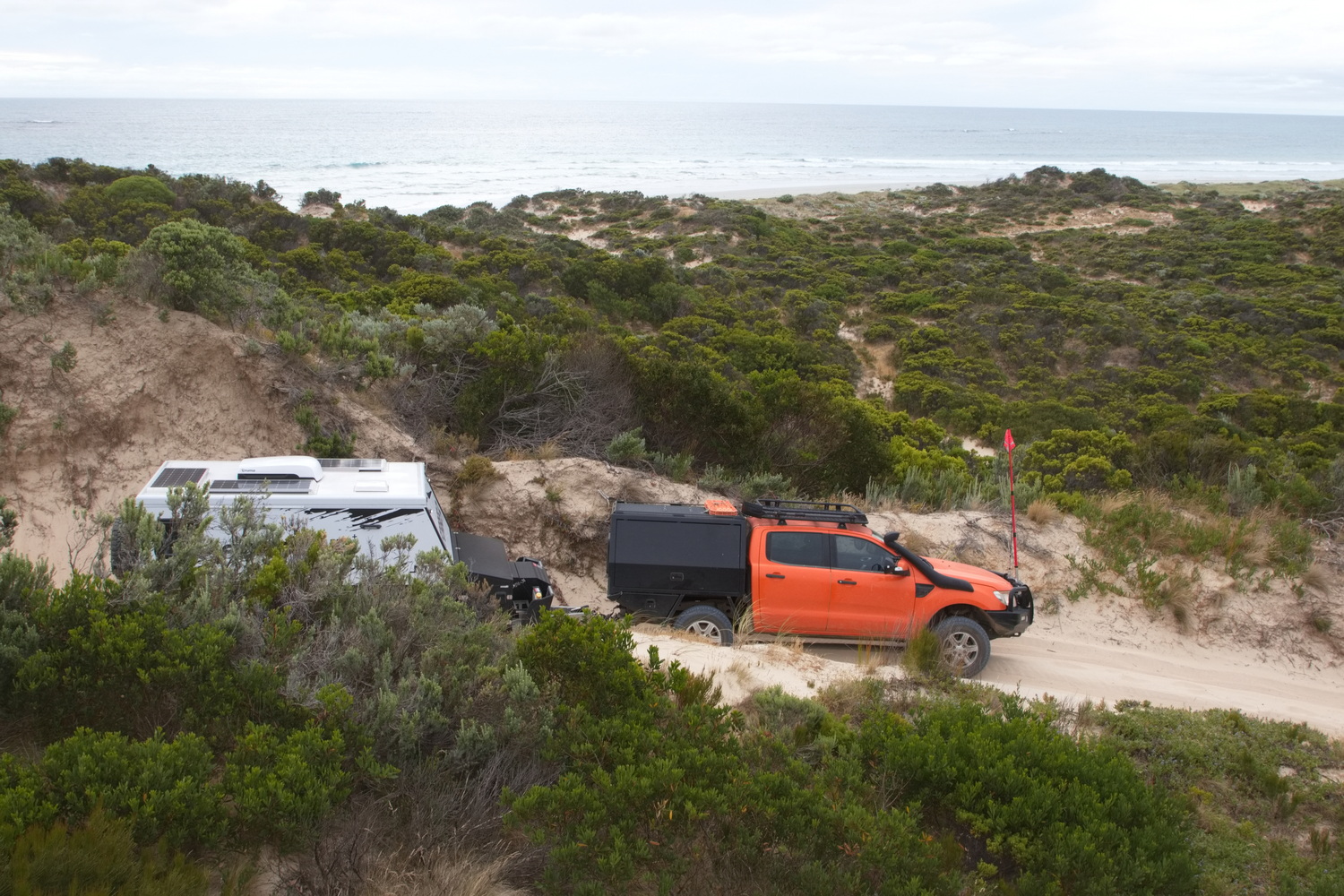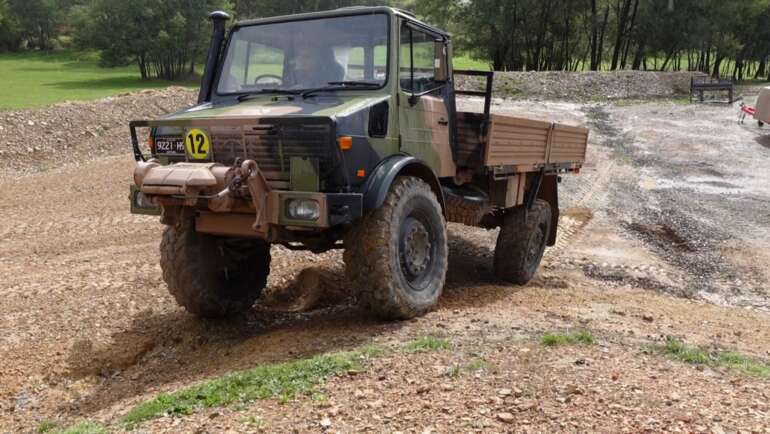
Are EV 4X4s really going to ruin the weekend?
The electric vehicle (EV) revolution is here now and rapidly gathering pace. Today, EVs are absolutely a viable alternative to ICE (internal combustion engine, petrol/diesel) cars for daily-driving suburban duties. They’re safe, low to almost zero maintenance, easy to drive, don’t need warming up and there’s far more daily-drive range than the average Aussie needs.
Long distances such as interstate drives are entirely possible, and many EVs have been driven on laps of Australia. However, the EV interstate experience is still not as quick or easy as the same trip in an ICE vehicle as range isn’t as usually as great as ICE, charging points are fewer than petrol stations, and charging takes longer than refuelling with petrol – you generally have to stop when the car needs a stop, not when the human needs a stop, and you can’t quickly re-energise the car then move on to somewhere else. But that situation is steadily improving as EV car ranges increase – the latest are over 600km – and more charging points are built.
However, EVs are not quite cost-effective for the average Australian driver just yet, but that too is changing quickly as prices of new EVs drop, resale values climb and petrol prices increase.
So what can’t EVs do? Not much, unless you’re in the small minority of drivers who are into long-distance offroading (overlanding) and towing. Like me, and my readers.
For short range towing and offroad work EVs aren’t just okay, they’re very good indeed at both towing and offroading, but the problem is EV 4x4s lack the range for multi-day camping trips, overlanding, desert crossings, towing hundreds of kilometers in a day and general remote-area touring. They probably can’t even do a short weekend’s offroading.
So why can’t modern EVs replace diesel 4X4s for offroad touring and towing? Basically, lack of range. That’s what this video explains:
There’s important differences between suburban EVs and 4×4/tow EVs. Suburban EVs use relatively small, quick-to-charge batteries, and do two things to maximise battery life; firstly rely on relatively slow home charging for hours each night, and secondly only charge to 80% for the next day or next trip leg – both of which are good ideas to maximise battery life and performance. Many EV owners never need to use public chargers when they drive around their home city. And when they do use public, faster chargers, often those chargers are located in areas such as shopping centres where the driver can go do errands such as shopping so there’s little time wasted just hanging around waiting for the charge.
However, an EV towing or touring offroad needs a far larger battery which under load is quickly depleted (see video above for why), and if you’re charging en-route you can’t wait hours for a charge, you want to keep moving. You also don’t want to head off into the bush with only an 80% charged battery because you never know when you’ll need all the range you’ve got, be that ICE or EV. This is what those who say “well there is a 10A plug anywhere” miss – that’ll work, sort of, for a small EV on a Big Lap, good luck with a larger one modified for remote camping or towing.
Further complicating the problem is the fact that 4x4s often travel in convoy, and such travel is often seasonal for reasons of holidays and weather. So, you may well have a group of ten 4x4s turn up to a bush town…imagine trying to fast-charge all ten at a time for your own trip, and then another 30 who turned up around the same time. Towns like Dargo, Robe, Birdsville, Coen and more experience massive peak refuel demand, but offpeak it drops to almost nothing. And for EVs, even if there’s multiple cables at one charge point, you won’t necessarily get maximum charging rate from both at the same time. For towers, consider peak season at somewhere like the Yorke Penisula…hundreds of caravans, imagine them all wanting a recharge. With ICE you can simply send the tankers once a day not once a week and solve the throughput issue. With EVs you cannot simply add more charging stations and generate more electricity just for a few weeks.
It does seem that some pro-EV people don’t get how popular Big Lap, 4×4, towing and remote-area travel is. Right now the Simpson Desert will be quiet…because it’s closed. Come opening weekend and it will be, as some have said, “busier than a city centre” which might be an exaggeration but it’s still very popular and getting more so. And you don’t need to go anything like as far as the Simpson to experience EV range problems in remote areas when offroading or towing; a short weekend trip will do it.
This infrastructure problem is easily solved with enough investment – there’s no technological barrier – but it’ll take quite a bit of money to provide enough charging in remote areas for the demand, and I can’t see that happening any time soon. And you must have seen queues of cars at servos around 200-300km out of a city at the end of long weekends…if you’ve got an road-only EV loaded with family plus gear on the roofrack leaving say Bright, then you may well need a top up before you make it to Melbourne, especially if you’ve not managed to start with 100% charge, or you divert along the way, or you don’t want to arrive back home with less than 10% charge as others need the car soon as you get home. Real-world EV use, especially for 4×4/towing, should not necessarily assume 100% charge at start, and that 10% or less is acceptable when you finish.
So as of today, no EV exists or is planned that can travel the distances that my camping/towing equipped diesel Ranger does, or refuel as quickly. And even if the car existed, the infrastructure isn’t anywhere near extensive enough to enable long-distance travel. Until that changes, I’ll need to stick with diesel for that use, as will many others. I’d actually love to ditch diesel; I prefer the quiet, no-pollution, low-run-cost reliability of an EV 4X4.
One interesting consideration is truly remote-area recharging, as in far away from any human habitation. It would be possible to build a solar and wind powered recharge station for EVs that needs no visits from fuel tankers. However, given the high electrical consumption of 4X4s and the cost of establishing such a charge station, I don’t know how cost-effective it would be. In time after the technology matures and lowers costs, I’m sure it’d be a solid investment return.
So would my weekend be ruined if I was forced to drive an EV? Right now as a 4×4 tourer and camper, yes, I couldn’t tow my van and even without towing, I couldn’t get anywhere near some of the remote places in Australia that I enjoy visiting. Lucky for me I enjoy hiking.
But I’d love an EV as a sports car and/or daily driver, so the government should be doing much, much more to bring Australia into line with the rest of the world and adopt EVs; so many reasons from climate change to pollution to fuel security, and even if you don’t agree there it’s a moot point as there won’t be anything else other than EVs on the market soon, so best Australia get ready with charging infrastructure. And don’t tell me that we can’t generate enough electricity! But EV 4X4s are new, and they’re only going to improve; we need a step-change in battery density, and then EVs will be ready to replace ICE 4X4s.



2 Comments
by David Maxwell Howard
Yep they will improve range over time but afraid we wont see it in our lifetime. Remote touring of course nedd remote charging unless solar is a factor.
by Benny
All very true…what is missing is the will, the investment and the stack of engineers to develop solutions. We (here in Australia) have none of these – well maybe we have a few engineers! Not so the case in China, where they too have huge distances and probably discovering the charm of touring in massive numbers…with over a billion people, they must blitz the number of people in Australia who like to tour, tow and go to sparsely populated locations. The solutions, I expect will come from China.